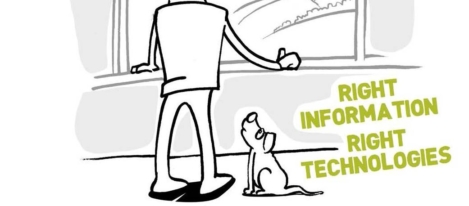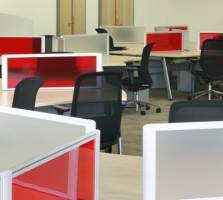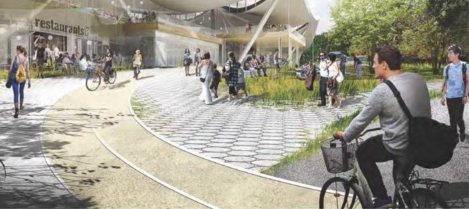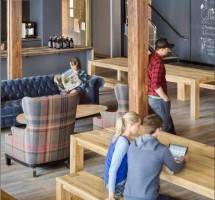July 30, 2016
Office work not as bad as smoking + New age of reason + Productivity gap 0
 In this week’s Newsletter; Mark Eltringham suggests reading the source material behind the latest sitting is the new smoking guff; and celebrates a new age of reason in workplace design. New evidence that giving employees more control over workplace design is the most important contributing factor to their wellbeing; businesses ready to embrace the workplace robot; and the UK economy still to address productivity and digital skills gaps. Third of parents struggle to find childcare across the summer holidays; retaining ‘passporting’ rights to the single market vital for the City during Brexit negotiations; rising over 50s population of workers suffer discrimination; and researchers confirm the imminent demise of the ‘nearly useless’ desk phone. Download our new Briefing, produced in partnership with Boss Design on the link between culture and workplace strategy and design; visit our new events page, follow us on Twitter and join our LinkedIn Group to discuss these and other stories.
In this week’s Newsletter; Mark Eltringham suggests reading the source material behind the latest sitting is the new smoking guff; and celebrates a new age of reason in workplace design. New evidence that giving employees more control over workplace design is the most important contributing factor to their wellbeing; businesses ready to embrace the workplace robot; and the UK economy still to address productivity and digital skills gaps. Third of parents struggle to find childcare across the summer holidays; retaining ‘passporting’ rights to the single market vital for the City during Brexit negotiations; rising over 50s population of workers suffer discrimination; and researchers confirm the imminent demise of the ‘nearly useless’ desk phone. Download our new Briefing, produced in partnership with Boss Design on the link between culture and workplace strategy and design; visit our new events page, follow us on Twitter and join our LinkedIn Group to discuss these and other stories.









 Office politics is the one thing many young people are least prepared for when starting their first job, according to a new study by the Co-op. The study comes as many them are about to enter the workforce for the first time. With more young people opting for the world of work in the form of apprenticeships and on the job training rather than higher education, the members of ‘Generation Y’ often find they are unprepared for these softer skills needed to get on in the office according to the poll of 1,100 16-25 year olds. Over half of young people (54 percent) said that they were not prepared or informed about office politics. The study is part of the Co-op’s campaign to champion young people in the workplace by taking a closer look at what motivates 16-25 year olds. The research suggests that young people could find it harder to express opinion and ideas in the workplace, which in turn could lead them to feel isolated and unsupported.
Office politics is the one thing many young people are least prepared for when starting their first job, according to a new study by the Co-op. The study comes as many them are about to enter the workforce for the first time. With more young people opting for the world of work in the form of apprenticeships and on the job training rather than higher education, the members of ‘Generation Y’ often find they are unprepared for these softer skills needed to get on in the office according to the poll of 1,100 16-25 year olds. Over half of young people (54 percent) said that they were not prepared or informed about office politics. The study is part of the Co-op’s campaign to champion young people in the workplace by taking a closer look at what motivates 16-25 year olds. The research suggests that young people could find it harder to express opinion and ideas in the workplace, which in turn could lead them to feel isolated and unsupported.




 In March,
In March, 












July 28, 2016
Working in an office is NOT as bad as smoking, whatever you might read 0
by Mark Eltringham • Comment, Knowledge, Wellbeing, Workplace, Workplace design
(more…)